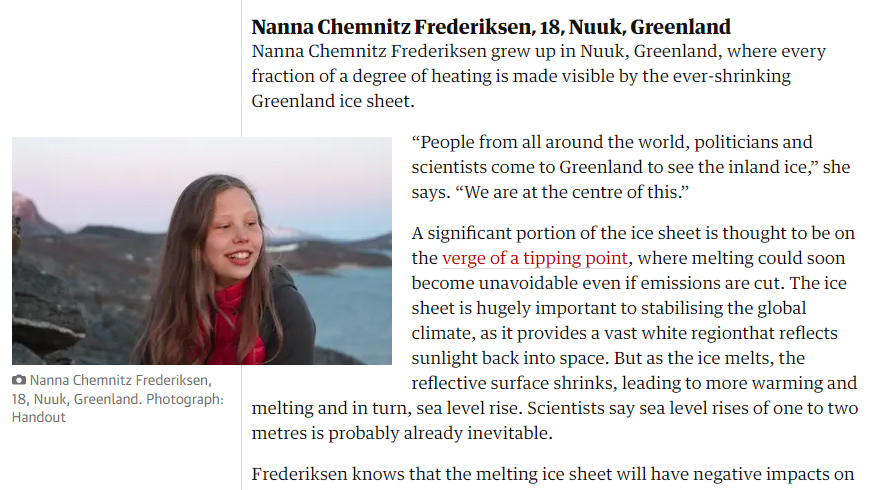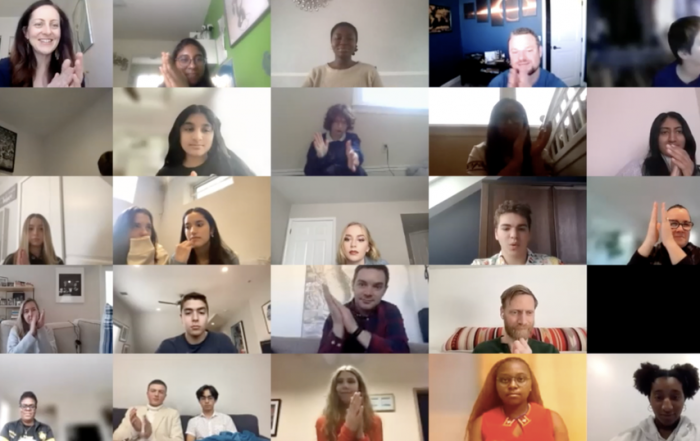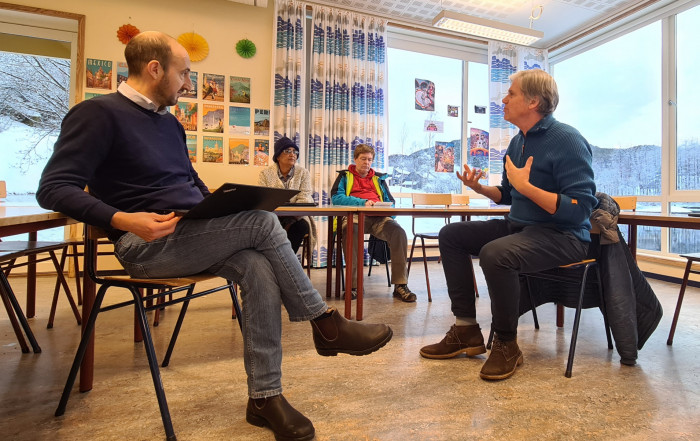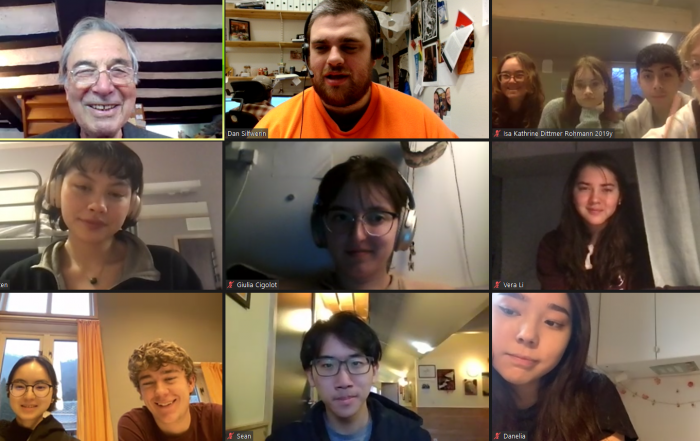“People from all around the world, politicians and scientists come to Greenland to see the inland ice,” she says. “We are at the centre of this.”
A significant portion of the ice sheet is thought to be on the verge of a tipping point, where melting could soon become unavoidable even if emissions are cut. The ice sheet is hugely important to stabilizing the global climate, as it provides a vast white region that reflects sunlight back into space. But as the ice melts, the reflective surface shrinks, leading to more warming and melting and in turn, sea level rise. Scientists say sea level rises of one to two metres is probably already inevitable.
Frederiksen knows that the melting ice sheet will have negative impacts on communities across Greenland, especially in northern settlements such as Qaanaaq where permafrost melting is destabilizing homes and roads and impacting how fishers and hunters operate.
But her real concern lies on the impact it will have globally. “I am not so scared of what the effects of the melting of ice in Greenland will be,” Frederiksen says, “It scares me what effect it can have for the rest of the world.”
Latest News
Changemakers in Action
"The Changemaker Project has made me more aware of social issues in the world and given me a chance to make a project that will make a difference. It has given me the [...]
IEPs at RCN: Tailored Support for Student Success
At RCN, students receive comprehensive support throughout their two-year program. This includes well-being support at the residential houses, as well as academic support from subject teachers and the Learning Support department. To address [...]
World Religion Week 2022
Between the 7th and the 13th of November, we continued with what has become a tradition at RCN: World Religion Week. This week we offered many different sessions, such as formal, philosophical lectures, [...]




